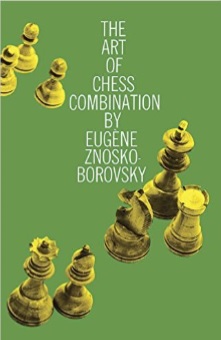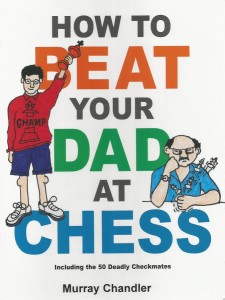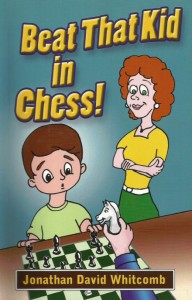Combinations in Chess Books
by admin on Dec.14, 2015, under Chess
Of the countless thousands of chess books that have been published over the centuries, some are notable in teaching the art of combination. Tactics are usually involved in combinations, and many of those attacking moves are in the middle game.
Let’s review three relevant books.
The Art of Chess Combination
The English-language version was originally published by Dover in 1959, and an enlarged edition came out in 2010. The author, Eugene Znosko-Borovsky, was a chess master in the early 20th century, best known in later decades as a writer of chess books. This particular one (probably like his other books) is not for the raw beginner but for intermediate or advanced players.

From the second chapter of The Art of Chess Combination:
All chess players know what a combination is. Whether one makes it oneself, or is its victim, or reads of it, it stands out from the rest of the game and stirs one’s admiration. Nevertheless, it is difficult to define the meaning of the word exactly. Definitions are either too wide or too narrow. The best of them convey very little to our mind, and do not correspond with the feeling which an actual combination inspires in us. . . .
Generally speaking, a combination, in the course of a game, has a quite distinct unity. Its beginning and its end can be determined. The moves which compose it are fairly closely linked with certain special characteristics, which we may sum up.
Be aware that this book by Znosko-Borovsky uses the old descriptive chess notation.
.
Beat That Kid in Chess
Published in 2015, this paperback book is for the “early” beginner, the novice who knows little more than the moves of the game but would like to learn how to win. It uses a new teaching method called nearly-identical positions, which helps teach tactics more effectively than other chess books for beginners.
The chess combinations are mostly very simple, in keeping with a book for the “raw” beginner, who would become bewildered by the complexities in an average chess book.
From page 43 of Beat That Kid in Chess:
The two white rooks in Diagram-31 are called doubled rooks. Each one supports the other. Black has two reasonable options: Get the rook at d8 to a safe square next to its king or protect the rook at d8 by moving the other rook to d3. I advise moving the other rook over to protect its brother. By the way, with the black rook at a3 moving to d3, black would also have doubled rooks.
How to Beat Your Dad at Chess
Don’t confuse this chess book with Beat That Kid in Chess, although their titles and covers are similar. The publication by Murray Chandler, How to Beat Your Dad at Chess, is not generally recommended for beginners, at least not for those who have recently learned the rules of the game. It’s much better for the player who has had some experience in winning games.

These two books having cartoon characters on the covers—neither one concentrates on how to beat the opponent indicated. Those appear to be marketing angles regarding “that kid” or “your dad.” Both teach you how to win, regardless of who your opponent is. Let’s now look into the second book.
From page 62 of How to Beat Your Dad at Chess:
A queen and a bishop are a classy double-act when it comes to homing in on the vulnerable h7-square. This straightforward but lethal mating pattern is fundamental to the success of many more complex combinations. The key components are a black king on h8, a white queen on the h-file, and a white bishop on h7. A move from the white bishop will unveil a discovered check from the queen.
###
.
One of the three publications here reviewed is the chess book Beat That Kid in Chess:
The reading level is most appropriate for teenagers and adults, although some older children would have no problem understanding it. The concepts taught are given simply. This is easy to understand, and could be a perfect gift for a chess beginner.
Chess Combination by Paul Morphy
The American chess master Paul Morphy (1837-1884) was regarded by many as the greatest chess player in the world, during his tour of Europe in 1858, and at that time some even called him the greatest player in history.
Reviews of three chess books
Beginner Chess Book for Teenagers
The new publication Beat That Kid in Chess
.


